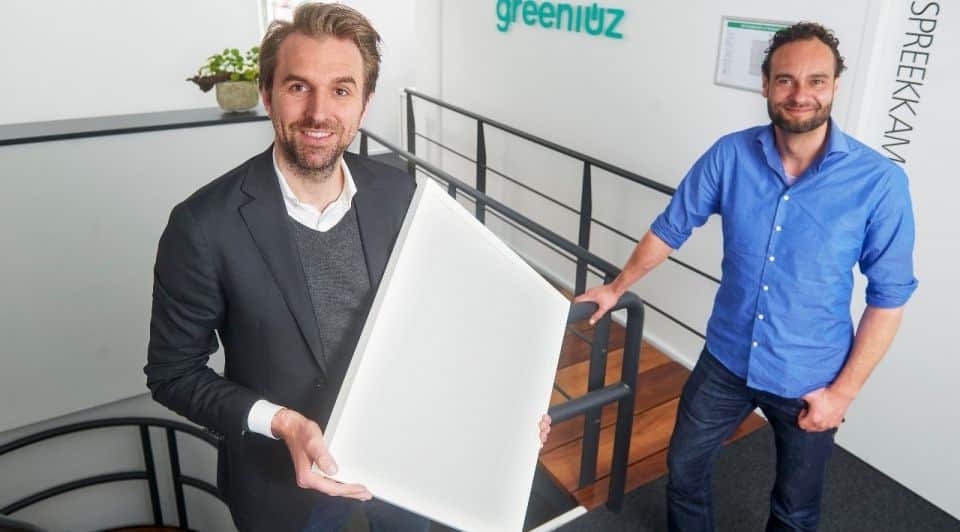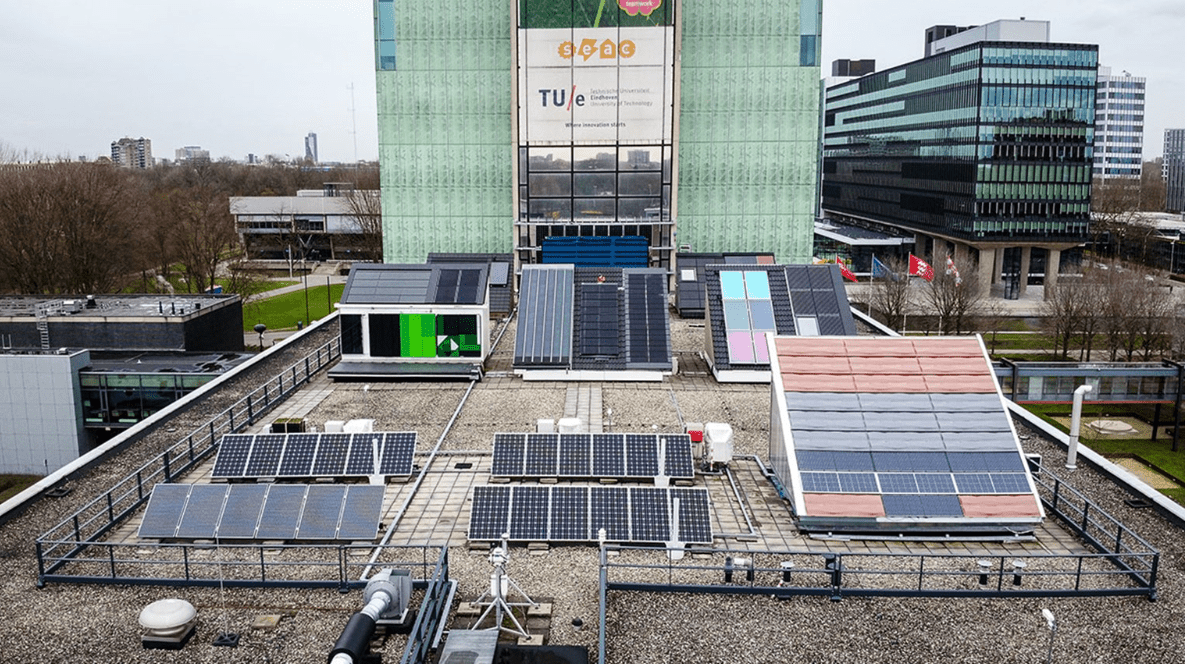
About Greeniuz
- Founders: Dirk Bellemakers and Pieter Lapré
- Founded in: 2018
- Employees: 15
- Money raised: -
- Ultimate goal: Offering a sustainable total solution internationally that allows everyone to heat their homes in comfort and in an energy efficient way without having to resort to gas.
By 2030, one and a half million homes in the Netherlands must be disconnected from the gas supply. So far, the solution has mainly been sought in heat pumps. Greeniuz does things differently and uses infrared panels that function as a main heating system. In this instalment of start-up of the day, we talk with founder Dirk Bellemakers about how this idea was conceived.
How did you start out?
“In 2018, my associate Pieter Lapré and I started developing a sustainable infrared panel. We saw that other companies were already working hard on it, but we wanted to show that it could be done even better. We approached housing corporations to have our panel tested.
Soon the Netherlands Enterprise Agency (RVO) contacted us to ask whether we could demonstrate that infrared could indeed be used as a main heating medium in existing residential housing. We first spent years taking measurement after measurement and testing everything, for example, on the level of comfort and energy efficiency. Then within two years, we had developed a demonstrably sustainable product.”
What problem are you solving?
In the Climate Accord, it is stated that 1.5 million homes must be off gas by 2030. In 2050, the gas tap will actually be turned off altogether. – A big problem for 86 percent of the homes connected to the gas grid in the Netherlands. So, demand for environmentally friendly and economical alternatives is enormous. We have developed a total solution to electrically heat your entire house. Even homes with a limited amount of insulation. The heat panels fit any room, work individually and are easy to expand into a complete system.”

What types of homes are you focusing on?
“Mainly homes built between 1950 and 1960 and the ones built around 1990 which have reasonable insulation values. This is the private market, but we are also focusing on business premises. Office spaces. for example. This is how we can heat a lot of buildings gas-free in a sustainable way.”
How do the panels work?
“Basically, it is all about radiation effectiveness. Our heat panel is suspended from a ceiling. You can put a thermostat in each room that you can set to a desired air temperature. When the panels are switched on, they heat up and emit infrared radiation. This causes the walls, floor and all objects in the room to heat up. This happens at an angle of 160 degrees. The ceramic plate on our panel accumulates heat, causing it to keep radiating for a longer period of time. Unlike radiators that heat up quickly but cool down even faster. Currently, the heat panel converts 73 percent of the energy into radiation. That is something that does set us apart from competitors.”
What else sets you apart from competitors?
“This is due to the thickness of the panel. But also aesthetically, because customers thought that mattered too. That was also why we developed panels with LED lighting. We use those in bathrooms, for instance, and also more and more often in living rooms. What I am also proud of is that our product is manufactured in our own country: from the raw material to the finished product. And obviously the fact that we can generate enough heat using very little power. In the end, it’s all about what people feel in their wallets. It is also not an investment that you have to make to recoup the costs over the course of several years. In fact, it can save you tens of thousands of euros compared to a heat pump over an average of ten to twenty years.”
How will people know the panel is working properly?
“Recently, a new standard, the IEC 60675-3, was introduced to classify heat panels. On the Internet, people just randomly make claims and there is a lot of nonsense online about infrared panels. So the need for a quality standard was growing. This scheme allows both individuals and business customers to see which panel is of good quality and which isn’t.”

What challenges are you running into?
“We have already overcome quite a few challenges. Our main challenge at the moment lies in gaining recognition from the market and government. For example, it was recently announced that the ISDE subsidy for heat pumps and insulation measures has once again been raised – this time by 62 million euros. We think it’s a great initiative. But it would be fair if people would also be eligible for this subsidy if they chose to buy infrared panels to make their homes gas-free. To that end, we are now having a lot of discussions with national policy makers.”
What are your goals for the future??
“To see a doubling of sales year on year. I am pretty clear about that. That’s why we are very thrilled to have been able to strengthen our team with Kees Koolen. He is the former CEO of the major online travel agency Booking.com. Lately, Kees has also been heavily involved in the energy transition. We both have the same goal, which is to contribute to speeding up independence from gas and by doing so accelerate the transition to a more sustainable society. Another goal is to gain even more recognition. We want to make people aware of how infrared works and that is why we do a lot of outreach and education in that area.”








